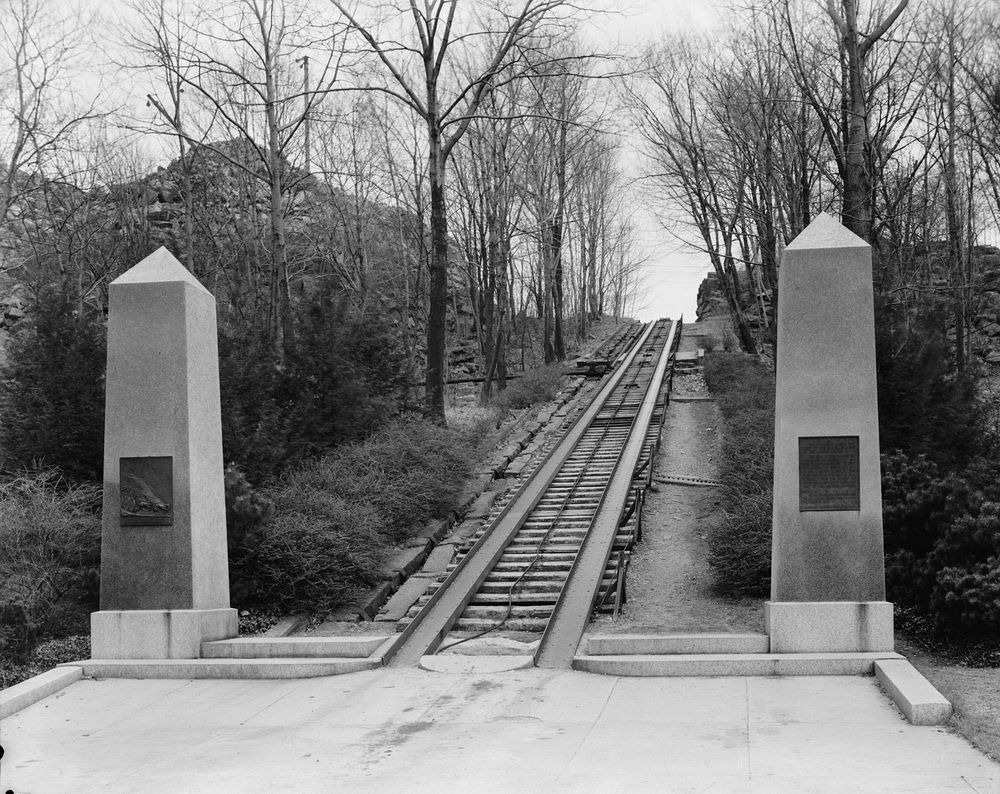Transporting the massive blocks of granite from the quarry to the site of construction presented a challenge.
The Incline portion of the Granite Railway, Pine Hill Quarry to Neponset River, Quincy.
A single horse could pull three cars loaded with 16 tons of rock over wooden rails plated with iron.

Later, the wooden rails were replaced with granite rails.
The iron plates were retained.
Gridley Bryant never patented his inventions, believing they should be for the benefit of all.
The incline was 315 feet in length and rose to a level of 84 feet.
At the top was the new mine while at the bottom was the railroad system.
The incline continued in operation until the 1940s.
Tourists would step into the empty wagons and would be pulled up the incline.
During one such tour, the cable broke and a wagon derailed throwing its occupants over a cliff.
One perosn was killed and three other passengers were badly injured.
In 1871 the Granite Railway was acquired by the Old Colony and Newport Railway.
The new management replaced the granite tracks with contemporary construction.
Steam trains then took granite from the quarries directly to Boston without need of barges from the Neponset River.
Photo credit:C Hanchey/Flickr
Replica of the first carriage of Granit Incline exposed on 1934.
Photo credit:Chensiyuan/Wikimedia
Sources:Wikipedia/American-Rails.com/geologywriter.com










